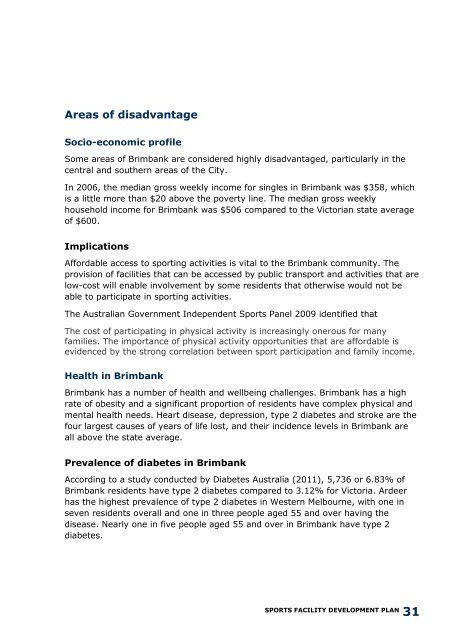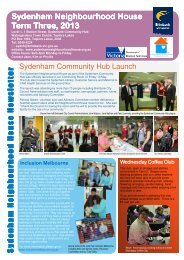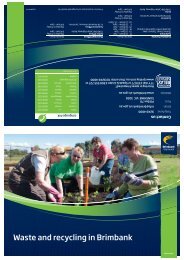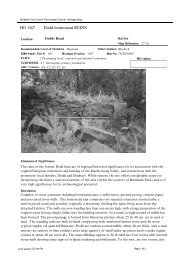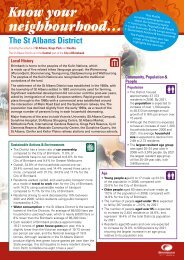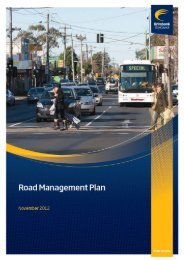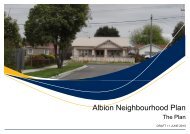Sports Facility Development Plan (10 years) - Brimbank City Council
Sports Facility Development Plan (10 years) - Brimbank City Council
Sports Facility Development Plan (10 years) - Brimbank City Council
- No tags were found...
You also want an ePaper? Increase the reach of your titles
YUMPU automatically turns print PDFs into web optimized ePapers that Google loves.
Areas of disadvantageSocio-economic profileSome areas of <strong>Brimbank</strong> are considered highly disadvantaged, particularly in thecentral and southern areas of the <strong>City</strong>.In 2006, the median gross weekly income for singles in <strong>Brimbank</strong> was $358, whichis a little more than $20 above the poverty line. The median gross weeklyhousehold income for <strong>Brimbank</strong> was $506 compared to the Victorian state averageof $600.ImplicationsAffordable access to sporting activities is vital to the <strong>Brimbank</strong> community. Theprovision of facilities that can be accessed by public transport and activities that arelow-cost will enable involvement by some residents that otherwise would not beable to participate in sporting activities.The Australian Government Independent <strong>Sports</strong> Panel 2009 identified thatThe cost of participating in physical activity is increasingly onerous for manyfamilies. The importance of physical activity opportunities that are affordable isevidenced by the strong correlation between sport participation and family income.Health in <strong>Brimbank</strong><strong>Brimbank</strong> has a number of health and wellbeing challenges. <strong>Brimbank</strong> has a highrate of obesity and a significant proportion of residents have complex physical andmental health needs. Heart disease, depression, type 2 diabetes and stroke are thefour largest causes of <strong>years</strong> of life lost, and their incidence levels in <strong>Brimbank</strong> areall above the state average.Prevalence of diabetes in <strong>Brimbank</strong>According to a study conducted by Diabetes Australia (2011), 5,736 or 6.83% of<strong>Brimbank</strong> residents have type 2 diabetes compared to 3.12% for Victoria. Ardeerhas the highest prevalence of type 2 diabetes in Western Melbourne, with one inseven residents overall and one in three people aged 55 and over having thedisease. Nearly one in five people aged 55 and over in <strong>Brimbank</strong> have type 2diabetes.SPORTS FACILITY DEVELOPMENT PLAN31


